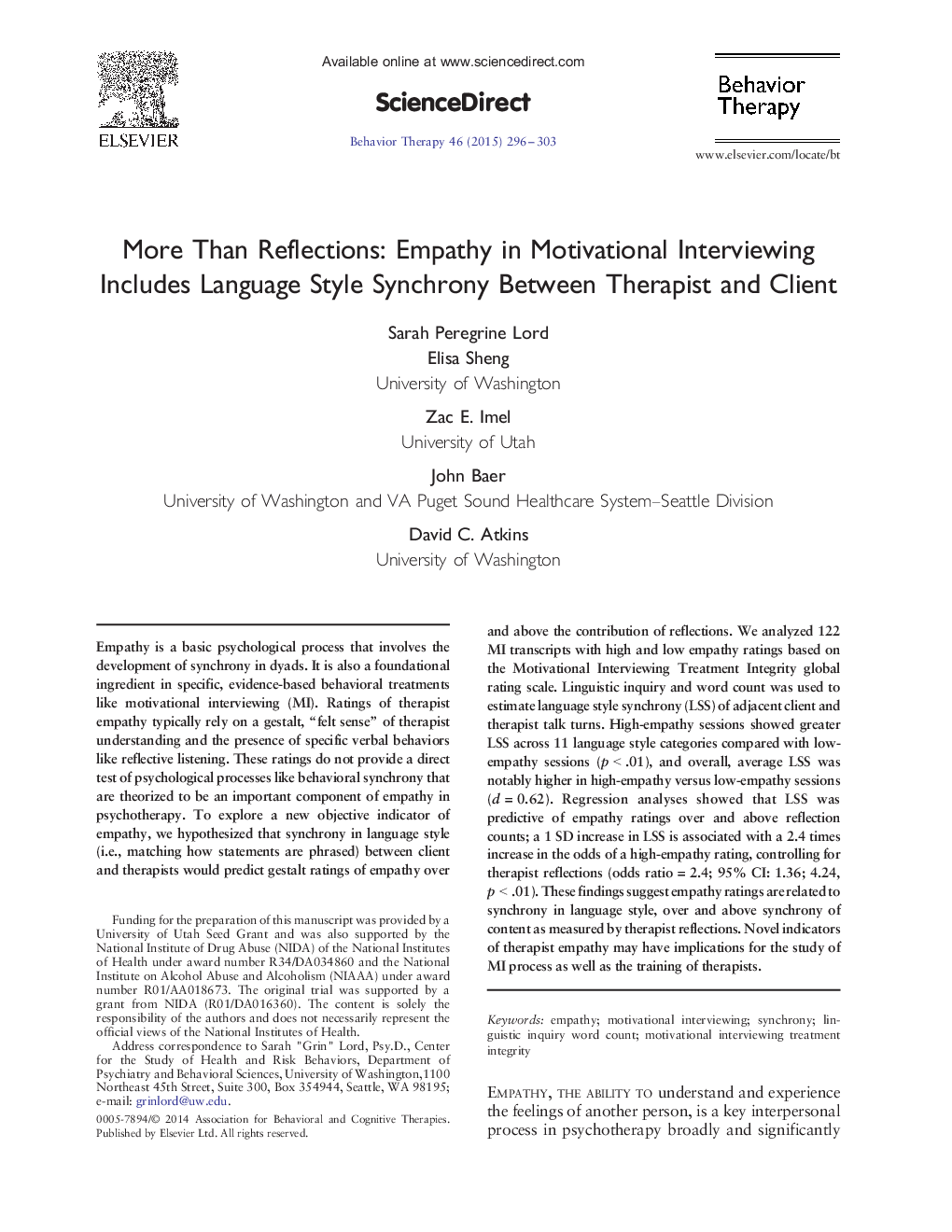| کد مقاله | کد نشریه | سال انتشار | مقاله انگلیسی | نسخه تمام متن |
|---|---|---|---|---|
| 901253 | 915855 | 2015 | 8 صفحه PDF | دانلود رایگان |
• Therapist empathy ratings often rely on a gestalt felt sense of understanding
• Could a more objective indicator—synchrony in language style in therapy—predict ratings of empathy?
• We analyzed motivational interviewing transcripts with high and low MITI empathy
• High-empathy therapists showed significantly greater language style synchrony
• Language style synchrony was predictive of empathy ratings above therapist reflection counts
Empathy is a basic psychological process that involves the development of synchrony in dyads. It is also a foundational ingredient in specific, evidence-based behavioral treatments like motivational interviewing (MI). Ratings of therapist empathy typically rely on a gestalt, “felt sense” of therapist understanding and the presence of specific verbal behaviors like reflective listening. These ratings do not provide a direct test of psychological processes like behavioral synchrony that are theorized to be an important component of empathy in psychotherapy. To explore a new objective indicator of empathy, we hypothesized that synchrony in language style (i.e., matching how statements are phrased) between client and therapists would predict gestalt ratings of empathy over and above the contribution of reflections. We analyzed 122 MI transcripts with high and low empathy ratings based on the Motivational Interviewing Treatment Integrity global rating scale. Linguistic inquiry and word count was used to estimate language style synchrony (LSS) of adjacent client and therapist talk turns. High-empathy sessions showed greater LSS across 11 language style categories compared with low-empathy sessions (p < .01), and overall, average LSS was notably higher in high-empathy versus low-empathy sessions (d = 0.62). Regression analyses showed that LSS was predictive of empathy ratings over and above reflection counts; a 1 SD increase in LSS is associated with a 2.4 times increase in the odds of a high-empathy rating, controlling for therapist reflections (odds ratio = 2.4; 95% CI: 1.36; 4.24, p < .01). These findings suggest empathy ratings are related to synchrony in language style, over and above synchrony of content as measured by therapist reflections. Novel indicators of therapist empathy may have implications for the study of MI process as well as the training of therapists.
Journal: Behavior Therapy - Volume 46, Issue 3, May 2015, Pages 296–303
